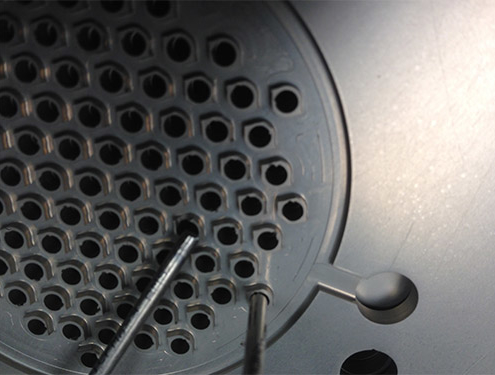What Is Diffusion Bonding?
Diffusion Bonding is a solid state metal joining process where two metals (which may be dissimilar) are joined together by the application of heat and pressure. Diffusion involves the migration of atoms across the joint that diffuse to each other, resulting in very high joint efficiencies.
The Diffusion Bonding Process
During the Diffusion Bonding Process, the two materials are pressed together at an elevated temperature usually between 50% and 70% of the melting point. The pressure is used to relieve the void that may occur due to the different surface topographies.
The interface contact can be optimized by a treatment of the surface to be bonded through a number of processes such as mechanical machining and polishing, etching, cleaning and coating. Full intimate contact of the surfaces at the joint interface is required, therefore surface treatment, selecting of bonding temperature and loading are important factors of the diffusion bonding process.
Benefits & Advantages of Diffusion Bonding?
- Diffusion Bonding offers considerable potential as a joining process for advanced metals used in the aerospace industry.
- Cooling effects can be maximized, resulting in better engine performances, higher efficiencies and increased durability of downstream components.
- High Joint efficiencies, near parent properties of metals
- Because metals do not reach their melting point, there is minimal shape change and deformation. Able to produce “micro channel” bonded details with hole and channel cooling features ½ mm in size.
Diffusion Bonding Offers Advantages Over Brazed Boints
- Unlike brazing no filler alloy is used that may compromise intricate cooling details
- Where end use temperatures are very high there is no risk of filler alloy material softening and joints weakening in service.
Industry Applications
Aerospace
- Engine Exhaust Liners
- Engine Nozzle Liners
- Combustion Liners
- Fuel Nozzles
- Transition Ducts
IGT
- Transition Ducts
- Combustion Liners
- Fuel Nozzles
Military /Commercial /Industrial /Automotive
- Fuel Cells
- Heat Exchangers
- Exhaust Systems
Materials
- Inconnels 617, 625, 718
- Hastelloy X
- Haynes 230, 282
- Titanium
- Stainless Steels
- Multiple layers
Thicknesses
- .5mm – 6.5mm(.020”-.250”)
Customers
- Siemens
- Mitsubishi
- Pratt & Whitney
- Rolls-Royce










